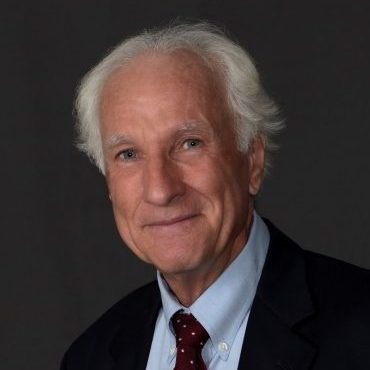 This month we’ll revisit two issues covered previously: attempts to promote compulsory licensing as a way for lowering the cost of Medicare drugs and increasing the return on investment from federally-supported R&D.
This month we’ll revisit two issues covered previously: attempts to promote compulsory licensing as a way for lowering the cost of Medicare drugs and increasing the return on investment from federally-supported R&D.
Last month we discussed Rep. Lloyd Doggett’s (D-TX) bill allowing the government to issue compulsory licenses if a company won’t sell a drug to Medicare for the price the feds wants to pay. In a recent “Dear Democratic Colleague” message seeking co-sponsors for his effort Rep. Doggett’s office says:
Some of us have a slightly different moral outlook than some pharmaceutical executives. Granting a government-approved monopoly with no counterbalancing restraint means consumers pay monopoly prices for their medications- whatever a sick or dying person will pay for a little less discomfort or a little more life.
Evidence of the alleged higher moral standards of Congress are based on an article Pharma chief defends 400% drug price rise as ‘moral requirement’ in the Financial Times. It quotes the CEO of Nostrum Laboratories as saying he has a “moral imperative to make money when you can… to sell the product for the highest price.” He also praised the actions of Martin Shkreli (now in prison for fraud) who ignited a fire storm when he openly bragged about increasing the price of an AIDS/cancer drug his company acquired.
This should get blood boiling on Capitol Hill— but there’s one problem. The reason the price is being raised on Nostrum’s drug, like Shareli’s, has nothing to do with patents and wouldn’t be alleviated by compulsory licensing. The drug at the center of the current controversy is a liquid form of Nitrofurantoin used to treat bladder infections. It doesn’t have any patent protection and is available from five different companies. Here’s what went wrong according to the Financial Times:
Companies such as Nostrum and Casper have been able to raise the price of the antibiotic so dramatically due to supply shortages of the liquid version that were prompted by new rules on impurities from the US Food and Drug Administration.
(emphasis added)
Similarly, Shkreli’s price gouging had nothing to do with patents. His company acquired an old drug without patent protection that had received FDA approval. Shkreli knew potential competitors would not undertake the expense of going through the FDA process because he could lower the price before they could enter the market, thus insuring they’d lose money.
Both cases are examples of companies taking advantage of the government’s regulatory system, not troubles created by patents. However, you’d never know that from listening to those pushing anti intellectual property agendas. Let’s hope Rep. Doggett’s colleagues do some homework before jumping on board his shaky bandwagon. It’s a lot more likely to run over American innovation that it is to lower drug prices.
Now to the second item on the agenda. When the Administration announced its “Return on Investment” initiative geared toward increasing the benefits taxpayers receive from federally-supported R&D, Secretary of Commerce Wilbur Ross turned a lot of heads when he said:
Universities seem to be doing far better than the federal labs and can teach us a thing or two… Recent studies have shown that federally funded university research is about 5 times more likely to result in a licensed patent technology. And about seven times more likely to result in an active patent license. Universities received $1.78 billion in licensing revenue from their innovations in 2014. In comparison, the total amount of royalties received from licensing government inventions was only $194 million in 2014… In that year universities received $66 ½ billion for R & D while federal labs received $42 Billion.
Now if you do the math, universities received just over 50% of the R&D funding, but license nearly 10 times the value of technology. One would imagine that the gap has widened even further, as university activity has exploded…
But the pattern has persisted long enough, and the math is so lopsided that it seems to me that there is a message in it.
A new study quietly posted by Commerce’s National Institute of Standards and Technology, which is leading the ROI initiative, indicates that Sec. Ross may have actually understated the problem. Whether or not the Administration deciphers the message remains to be seen.
The team which produced the highly influential studies on the significant economic impact the U.S. is receiving from patents licensed by universities and other nonprofit research institutions was asked by NIST to use the same approach to calculate the economic impact of federal laboratory licensing.
Buried in Appendix F is a chart comparing the impact of academic institutions and federal laboratory’s patent licensing efforts from 2008 to 2015. Assuming a 2% running royalty rate, the relative contributions to U.S. gross domestic product were:
Academic institutions $317 billion
Federal labs $25 billion
Contributions to “person years of employment supported” were:
Academic institutions 2 million
Federal labs 156 thousand
Academic institutions and federal labs receive approximately the same amount of R&D funding from the government, although universities have more money overall because of contributions from industry, states and other sources. Still, the disparities in their licensing impact reinforces the implication from Sec. Ross that a top to bottom review of the federal lab tech transfer system is sorely needed.
After spending three months gathering public comments the ROI initiative is not expected to issue its findings until next spring. This is an untypically drawn out process for the action oriented Trump Administration. As mentioned before many of the problems in the federal lab system are cultural, not legal. Because these involve changing deeply ingrained habits they require hands on management, not ethereal policy papers.
Let’s hope the Administration seizes its opportunity and doesn’t let the bureaucracy turn the ROI initiative into predictable Washington pabulum. Otherwise, Sec. Ross’ successors may have even worse data to report to the American people. And they’re plenty angry already.

![[IPWatchdog Logo]](https://ipwatchdog.com/wp-content/themes/IPWatchdog%20-%202023/assets/images/temp/logo-small@2x.png)

![[Advertisement]](https://ipwatchdog.com/wp-content/uploads/2024/03/IP-Copilot-Apr-16-2024-sidebar-700x500-scaled-1.jpeg)
![[Advertisement]](https://ipwatchdog.com/wp-content/uploads/2024/04/Patent-Litigation-Masters-2024-sidebar-early-bird-ends-Apr-21-last-chance-700x500-1.jpg)

![[Advertisement]](https://ipwatchdog.com/wp-content/uploads/2021/12/WEBINAR-336-x-280-px.png)
![[Advertisement]](https://ipwatchdog.com/wp-content/uploads/2021/12/2021-Patent-Practice-on-Demand-recorded-Feb-2021-336-x-280.jpg)
![[Advertisement]](https://ipwatchdog.com/wp-content/uploads/2021/12/Ad-4-The-Invent-Patent-System™.png)







Join the Discussion
2 comments so far.
John Fraser
September 25, 2018 02:33 pmJoe. An excellent and thoughtful analysis, as usual. Thank you yet again one more time Joe.
The one licensing issue that I have not seen given expression is the mix of disciplines on campus’ compared to federal labs. In the 2006 time frame, a study of AUTM stats (led by Lori Pressman I think) showed that 66% of academic license deals and 75% of academic gross licensing revenues were life science (Pharma, MedDev). On the fed lab side, putting aside the NIH contribution, it would be of interest to discover the mix.
So, I think an apples-to-apples comparison (campus/fed lab) is the number of licensing deals done. Comparisons of gross licensing revenues and by extension economic impact will require a more complex analysis. In addition, the fed labs have the CRADA mechanism which the campuses do not. This needs to be factored in, somehow.
BUT, since our mission is moving technologies from labs to market, the licensing deals done comparison is the key comparison (but you need to address the role of the fed lab CRADAs).
Licensing revenues are out of our control. It is the company and the market that will decide on how financially successful the deal is.
Helping the federal labs accomplish more licensing deals is the challenge. The solutions are administrative: lowering the fed lab collaborations friction points, AND increasing employee incentives for participation. (Campuses do not CAP the total amount of royalties an inventor receives. The amount is always expressed as a percentage. The federal labs have a very firm cap in terms of a fixed number, not a percentage I believe.
Walt Copan was able to capture the attention and interest of a key Trump advisor, Secretary Ross. Our licensing communities cannot allow the urgency of his interest to slip away.
Anon
September 25, 2018 10:45 am“although universities have more money overall because of contributions from industry, states and other sources.”
This cannot be set aside, as it is often the sum total of funding that drives success.
If government labs have no other sources, then any comparison of results is an apples to oranges comparison.